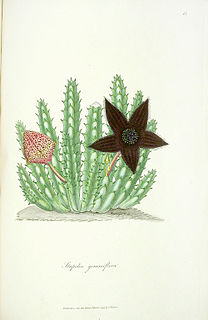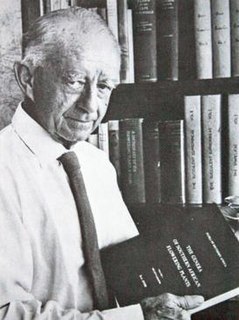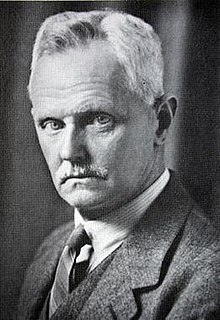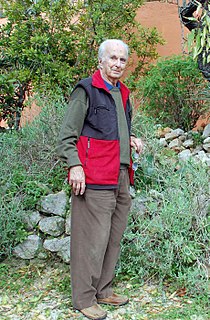
Leslie Charles Leach "Larry" (18 November 1909 Southend - 18 July 1996 Pietersburg) was a Rhodesian taxonomic botanist.
Leach arrived in Rhodesia in 1938 and carried on business in Salisbury as an electrical engineer. He developed an interest in succulent plants, particularly Stapeliae, Euphorbieae and the genus Aloe . He gave up the business world in 1956 and devoted himself to a self-financed taxonomic study of the three groups with a special interest in the " Flora Zambesiaca " region. He collected extensively in Mozambique and East Africa, also covering Angola, South West Africa and South Africa.

Rhodesia was a country in southern Africa from 1965 to 1979, equivalent in territory to modern Zimbabwe. Rhodesia was the de facto successor state to the British colony of Southern Rhodesia, which had been self-governing since achieving responsible government in 1923. A landlocked nation, Rhodesia was bordered by South Africa to the south, Bechuanaland to the southwest, Zambia to the northwest, and Mozambique to the east.

Harare is the capital and most populous city of Zimbabwe. The city proper has an area of 960.6 km2 (371 mi2) and an estimated population of 1,606,000 in 2009, with 2,800,000 in its metropolitan area in 2006. Situated in north-eastern Zimbabwe in the country's Mashonaland region, Harare is a metropolitan province, which also incorporates the municipalities of Chitungwiza and Epworth. The city sits on a plateau at an elevation of 1,483 metres above sea level and its climate falls into the subtropical highland category.

The genera of plants within the tribe Stapeliae are all to varying degrees stem succulents. Many of the species resemble cacti, though are not closely related, as an example of convergent evolution. The stems are often angular, mostly four-angled in cross-section, but in some species there are six or more, with some species of Hoodia having more than thirty angles. In size they vary from less than 2.5 cm/1" in length to over 2 m/6" tall. The leaves are in most species reduced to rudiments, sometimes hardened and thorn-like, arranged on bumps or tubercles on the angles. Some species, however, still have recognisable leaves, most notably the Indian species Frerea indica, and some members of Tridentea. Stapeliads are most abundant in warm, dry climates. In Africa, there are two separate regions where Stapeliads have most diversified: northeast Africa, and Southern Africa. Several species are endemic to the small island of Socotra off the Horn of Africa. The Arabian Peninsula, and most specifically the country of Yemen, contain another concentration of species. Several more are found in the drier parts of Pakistan, Afghanistan, India, Nepal, and Myanmar. A single species, Caralluma europea is found in Europe, in the very southern part of the Iberian peninsula. Stapeliads are often regarded as a climax group within the family because of their often structurally complex flowers. Certain aspects of these reproductive parts mirror the pollination systems in the Orchid family and represent a case of parallel evolution though both groups are quite unrelated and have developed similar, though not identical means to achieve the ultimate goal of pollination and therefore reproduction. Most stapeliads use flies as pollinators, that are attracted to odours resembling dung or rotting meat, emanating from the flowers. Many of the flowers also bear some physical resemblance to rotting animal carcasses, leading to their popular name of Carrion Flowers. However, not all stapeliads smell bad, or attract flies. Some species use beetles, bees, wasps, butterflies or moths as pollinators. Stapeliad flowers range in size from mere millimetres in species of Echidnopsis and Pseudolithos to those of Stapelia gigantea that can reach 40 cm/16" in diameter, and are some the largest of flowers to be found on any species of succulent.
Between 1972-81 Leach worked as Honorary Botanist of the staff of Rhodesia's National Herbarium and described himself as 'probably Rhodesia's only unpaid civil servant'. He coerced the Aloe, Cactus and Succulent Society of Rhodesia into producing a taxonomic series supplementary to Excelsa. Consequently, four volumes, including monographs of the Stapeliae, Orbea , Stapelia , Huernia and Tridentea , were authored by Leach and published between 1978-88.
Orbea is a bicycle manufacturer based in Mallabia, Spain. It is part of the Mondragón Cooperative Corporation and Spain's largest bicycle manufacturer. Orbea manufactures and assembles bikes at their own factory in Mallabia, with other models being made in Portugal and China.

The genus Huernia consists of stem succulents from Eastern and Southern Africa, first described as a genus in 1810. The flowers are five-lobed, usually somewhat more funnel- or bell-shaped than in the closely related genus Stapelia, and often striped vividly in contrasting colours or tones, some glossy, others matte and wrinkled depending on the species concerned. To pollinate, the flowers attract flies by emitting a scent similar to that of carrion. The genus is considered close to the genera Stapelia and Hoodia. The name is in honour of Justin Heurnius (1587–1652) a Dutch missionary who is reputed to have been the first collector of South African Cape plants. His name was actually misspelled by the collector.

Tridentea is a genus of succulent plant in family Asclepiadaceae, endemic to southern Africa.
In 1981 he settled in South Africa, working at the National Botanic Garden at Worcester from 1982–89, and finishing his work on the succulent Stapeliae of Southern Africa, publishing the results in Excelsa.

Worcester is a town in the Western Cape, South Africa. It is located 120 kilometres (75 mi) north-east of Cape Town on the N1 highway north to Johannesburg.
From 1990 he worked as Honorary Research Fellow in the Department of Botany at the University of the North near Pietersburg, where, before his death, he worked on the succulent Euphorbieae for Flora Zambeziaca. [1]

Euphorbieae is a tribe of flowering plants of the family Euphorbiaceae. It comprises 3 subtribes and 6 genera.
He was awarded the Harry Bolus Medal by the Botanical Society of Southern Africa in 1968, the Rhodesia Scientific Association's Gold Medal in 1977 and had fellowship of the Cactus and Succulent Society of America conferred in 1983. [2]

Harry Bolus was a South African botanist, botanical artist, businessman and philanthropist. He advanced botany in South Africa by establishing bursaries, founding the Bolus Herbarium and bequeathing his library and a large part of his fortune to the South African College. Active in scientific circles, he was a Fellow of the Linnean Society, member and president of the South African Philosophical Society, the SA Medal and Grant by the SA Association for the Advancement of Science and an honorary D.Sc. from the University of the Cape of Good Hope. Volume 121 of Curtis's Botanical Magazine was dedicated to him. He is commemorated in five genera: Bolusia Benth., Bolusafra Kuntze, Neobolusia Schltr., Bolusanthus Harms and Bolusiella Schltr., as well as numerous specific names.
The Cactus and Succulent Society of America (CSSA) was founded in 1929, in Pasadena, California and has grown to encompass over 80 affiliated clubs and thousands of members worldwide. The primary purpose of the society is to enjoy succulent (water-storing) plants through horticulture, travel and scientific discovery, with a particular concern for habitat preservation and conservation issues in deserts worldwide.
He is commemorated in numerous specific names such as Aloe leachii Reynolds, Huernia leachii Lavranos, Dombeya leachii Wild, the Asclepiad genus Larryleachia and the Choreocolacaceae genus Leachiella Plowes. This botanist is denoted by the author abbreviation L.C.Leach when citing a botanical name. [3]

















